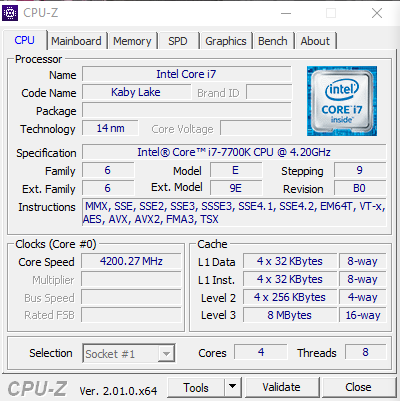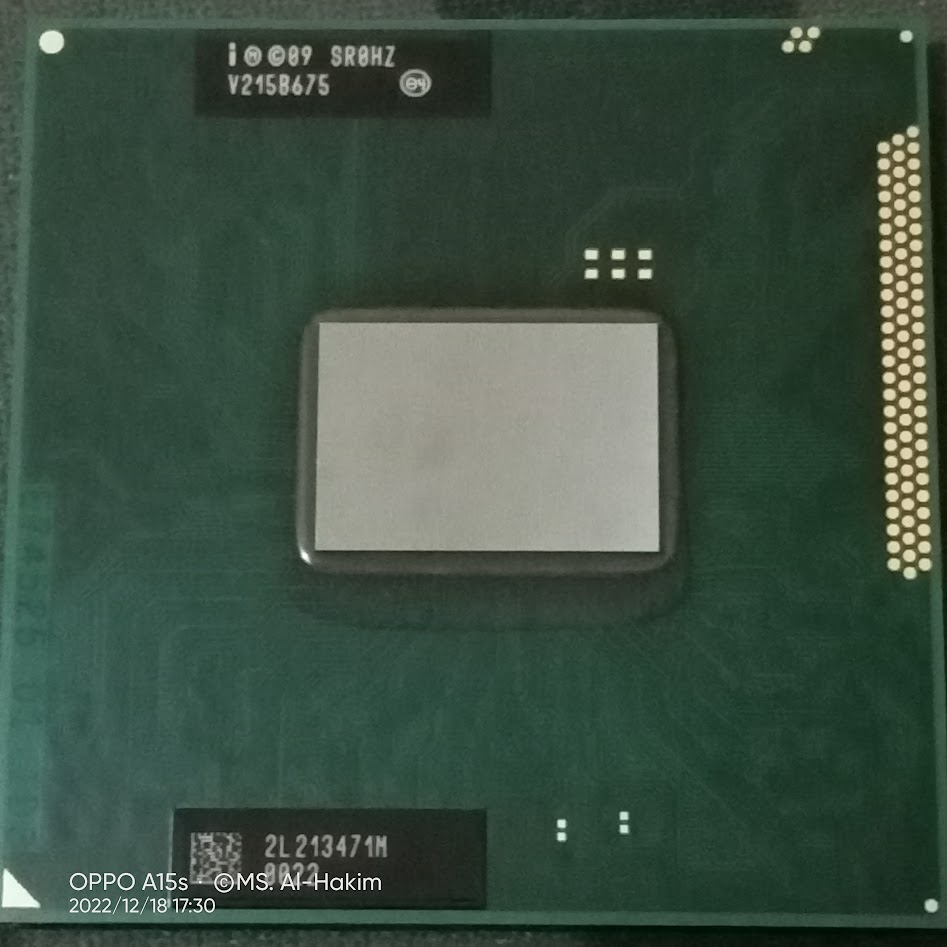Comparing: Intel Core i7 7700K vs Intel Celeron B815
In this comparison, we analyze two Processors: Intel Core i7 7700K and Intel Celeron B815, using synthetic benchmark tests to evaluate their overall performance. This side-by-side comparison helps users understand which hardware delivers better value, speed, and efficiency based on standardized testing. Whether you're building a new system or upgrading an existing one, this benchmark-driven evaluation offers valuable insights to guide your decision.
Specification Comparison Table
| Specification | Intel Core i7 7700K | Intel Celeron B815 |
|---|---|---|
| Architecture | x86 | x86 |
| Technology | 14 nm | 32 nm |
| Clock | 4.2 GHz - 4.5 GHz | 1.6 GHz - - |
| Core/Thread | 4 / 8 | 2 / 2 |
| Segmen | Desktop | Mobile |
Submission Comparison Table
| Benchmark Software | Intel Core i7 7700K | Intel Celeron B815 |
|---|---|---|
| Cinebench - R15 |
867 cb |
104 cb |
| Cinebench - R20 |
2222 pts |
207 pts |
| PiFast |
14sec, 730ms |
47sec, 490ms |
| SuperPi - 1M |
30sec, 414ms |
24sec, 976ms |
About Hardware Intel Core i7 7700K
Part of the Kaby Lake generation, the Intel Core i7-7700K is a high-end desktop processor released in 2017. It has 4 cores and 8 threads, with a base clock speed of 4.2 GHz and can increase to 4.5 GHz with Turbo Boost.
Built with 14nm fabrication, the i7-7700K has a TDP of 91W, so it requires a good cooling solution, especially in overclocking configurations. As it is a “K” series, this processor has an unlocked multiplier, allowing users to boost the clock speed higher with a motherboard that supports overclocking.
For graphics, the processor comes with Intel HD Graphics 630, which is sufficient for basic display but not optimal for gaming without a discrete graphics card.
In terms of performance, the i7-7700K is still strong enough for gaming and productivity, but compared to modern processors that have more cores and better efficiency, its competitiveness starts to decline, especially in multi-threaded applications.
Thursday, 23 June 2022 07:42:37 | Update: 1 week ago
About Hardware Intel Celeron B815
Released in 2012 as part of the Sandy Bridge family, the Intel Celeron B815 is an entry-level mobile processor aimed at cost-effective laptops. It has 2 cores and 2 threads, with a clock speed of 1.6 GHz without Turbo Boost or Hyper-Threading support.
With 32nm fabrication, the Celeron B815 has a TDP of 35W, which is quite high for a processor of its class. For graphics, the processor uses Intel HD Graphics 2000, which has a base clock speed of 650 MHz and can increase up to 1 GHz in Boost mode.
In daily use, the Celeron B815's performance is sufficient for light tasks such as browsing, document processing, and 720p video playback. However, since it lacks technologies such as Hyper-Threading and Turbo Boost, its performance is quite limited for multitasking and heavy applications.
Hardware Detail:
Device: SAMSUNG 300E4Z
RAM: 4GB DDR3 Dual Channel
OS: Windows 7
Sunday, 27 November 2022 02:25:40 | Update: 1 week ago


